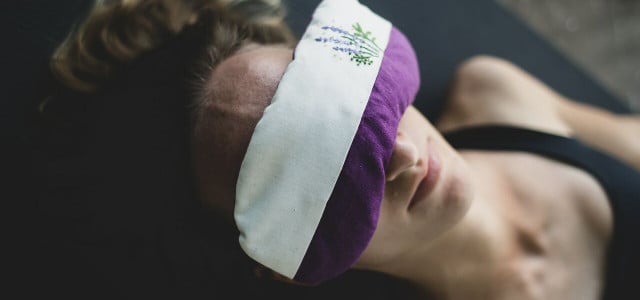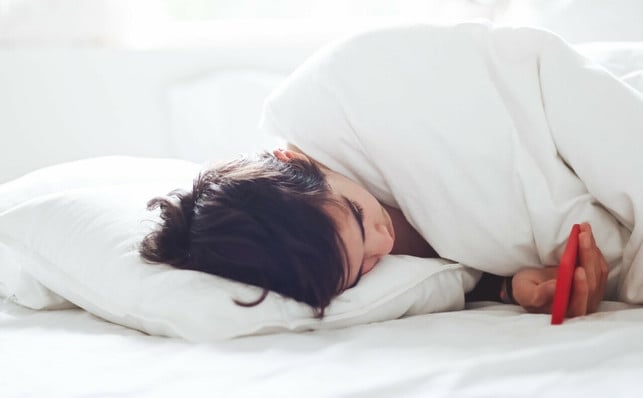
Sleeping on the floor is considered healthy and good for your back. You can find out here what this theory is all about and what sleeping habits do to your back.
Culture, finances, closeness to nature or expression of a lifestyle – there are many reasons to sleep on the floor. In Japan, people have slept this way for centuries. Even today, in many houses, a futon is used as a sleeping surface, which in turn lies on mats made of straw, so-called tatamis.
People repeatedly report that they sleep better on the floor and start the day feeling more rested. Is there something to it? And what does lying on the floor do to your back?
Sleeping on the floor: This is what studies say
Sleeping on the floor is said to be particularly gentle on the back, hips and other joints. This statement is not clearly scientifically proven, as there are currently no studies that explicitly examine sleeping on the floor.
A study from 2003 and another study from 2015 show that, contrary to popular claims, hard mattresses are not the most back-friendly surface. The researchers concluded that people with back pain should use a medium-firm mattress, as this is best for spinal alignment in most cases.
With a medium hardness level, test subjects had less pain both when lying down and after getting up and during the day than those who lay on a very hard mattress. On a very hard surface, the body’s pressure is concentrated on individual points, such as the shoulder and pelvis. This puts strain and damages skin and bones. Experts advise: The older and more pain-stricken the person is, the softer the surface should be. In healthy people, however, mattresses that are too soft can put strain on the back and cause back pain or blockages.
Sleeping on the floor in the Paleo lifestyle

Sleeping on the floor is particularly popular as part of the Paleo diet and lifestyle. Followers of the Paleo concept try to get closer to the original lifestyle of humans during the Paleolithic period. This includes, among other things, a diet consisting of unprocessed meat, fish, seafood, vegetables, fruits and nuts. However, other foods such as grains, legumes, sugar or milk and dairy products are completely avoided.
According to its proponents, the lifestyle should be healthy. According to them, our genes have not changed for thousands of years and have not had time to adapt to modern lifestyles (for example, processed foods or soft mattresses).
Followers of the Paleo lifestyle see various benefits of sleeping on the floor. The back should adapt to the surface and sleep movement should also be encouraged. This is good for muscle relaxation and for blood circulation in the organs. Some people who practice Paleo therefore ask whether a little “discomfort” might be healthier. On a hard surface you may initially wake up feeling exhausted, but organs such as the lungs can work better when sleeping on the floor than on a soft mattress.
How do I know if I’m lying well?
For a healthy person, a very soft sleeping surface is still not recommended. If the mattress is too soft, your back will sag even though it should remain stable and not sink.
When buying a new mattress, it is important to test it for several minutes so that you can get a good impression of its suitability. You should pay attention to the following things:
- The higher the hardness of a mattress, the more resilient it is. As a rule of thumb, you can use your own height in centimeters minus 100 and compare it with your weight. If your body weight is lower, you should choose a soft mattress. If the values are almost identical, a medium one is suitable. If the weight is higher, a hard mattress is recommended.
- When you try out lying down, lie in your usual sleeping positions for longer. This way you can feel better whether the mattress has the right resistance and degree of hardness.
- The shoulders and pelvis should only sink in so much that the spine retains its natural shape: a slightly curved S.
- If the surface is too hard, you can still fit a flat hand between your waist and the mattress.
Extra tip: If you want to try sleeping on the floor, you can approach the topic slowly and first place a soft surface between them. And if you don’t want to banish the bed from the bedroom and invest in a pad, you can test what sleeping on the floor feels like while on vacation. There are now straw hotels or accommodations with beds on the floor across Germany.
Edited by Paula Boslau
Read more on Techzle\.com:
- Painting the bedroom: Which colors ensure a good night’s sleep
- Pine wood: Positive effect on health and sleep
- Feng Shui: Setting up your bedroom according to the Far Eastern theory of harmony
** marked with ** or orange underlined Links to sources of supply are partly partner links: If you buy here, you are actively supporting Techzle\.com, because we then receive a small part of the sales proceeds. More info.